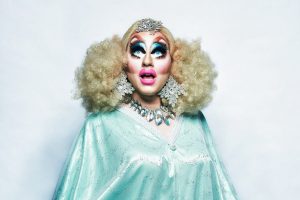The herstory of Drag is one of struggle, damnation, and, most importantly, fabulous ferocity. Drag is something that has been widely misunderstood, and even more widely unaccepted. RuPaul Charles—more appropriately, Mama Ru—has been working for decades to expose Drag to the masses as a normal and respected practice and art form.
In that time, he has gained notoriety as not only a fashion icon, but as a feminine icon. Drag has shaken the foundations of commonly accepted gender roles and expanded what American society accepts and embraces as beauty. People are beginning to accept that Drag is not taboo. Thanks in large part to the success of RuPaul’s Drag Race and its contestants, the world is learning to not only accept Drag, but to respect it.
Language is an important medium through which to analyze culture. The rhetoric people use, the things people say and how they choose to say them, speaks to their collective interests and values. What RuPaul and his Queens have done to language with the freedom to experiment on and alter language to be a recognizable aspect of their culture, is a marvel. To exemplify the way language is manipulated and transformed by this subculture, we’ll indulge in a microcosmic look at the Jargon of the Drag Race.
It’s an important refresh, since the lexicon that RuPaul helped develop has placed itself firmly in everyday conversation and has immortalized itself in film and music. RuPaul has made a name for himself in the music circuit since the 80s, but has now exploded into a Dance-Pop superstar. Many of his words of wisdom can be found in his music. One of his songs, “Born Naked,” provides an important insight:
“We’re all born naked and the rest is Drag.”
Social commentary of this scale is legendary in its simplicity. For something that is so commonly unaccepted, when you really stop and think about it, we’re all just dressing up as the person we want the rest of the world to see. Every day, we put on clothes that label us into some specific style, we do activities that label us as being “into” certain things; each and every one of us practices Drag in some sense.
The way we wish to be perceived by others is personal and should be treated with respect.Trans issues are being discussed openly because of the rising respect for phenomenal women like Laverne Cox (Orange Is the New Black) and Laura Jane Grace (Tranny: Confessions of Punk Rock’s Most Infamous Anarchist Sellout)—people who have taken it upon themselves to step out into the spotlight and say, “Here I am, this is me, what more do you want?” and help mediate a conversation that widely needs to be had. While Drag and Trans are very different, each challenges problems with gender norms head-on.
The Queens who practice Drag refer to putting on their makeup as “painting their face” because they are radically transforming their appearance. Fun history lesson: the term Drag is argued to have originated in the Shakespearean era to refer to a male actor Dressed Resembling A Girl (D.R.A.G.). The transition from facial hair and Adam’s apples to positively radiant “fish realness” is a radical one, and something that requires a lot of practice to perfect. By Drag culture standards, fish is used to compliment how feminine a Queen looks, and subtly refers to the stereotypical eau de vagina. It is one of many Drag-based lexical choices that have taken on a life of their own and gained recognition as a fundamental part of Drag culture.
By its very definition, Drag is counterculture. It seeks to make a mockery of anything and everything, and to provide a bit of social commentary along the way. It will never be mainstream in the way most people perceive it, but it has provided a window of opportunity for people to consider what they think of as acceptable, as fashionable, as feminine, and as downright sickening. “Sickening” in terms of the Drag Race is a praise and absolutely not a condemnation and further evidences that the culture around Drag has taken on a life of its own.
RuPaul and his ever-evolving band of Queens are determined to challenge the fundamental way we think about words as well as the way we think about the people around us. If you haven’t met the new round of Queens, you can familiarize yourself here!
All 191 past and current episodes are available on Logo TV’s website.
-Logan Isaman is the Community Assessment Coordinator at Lawrence Public Library.






Add a comment to: RuPaul’s Drag Race & a Bit of Jargon